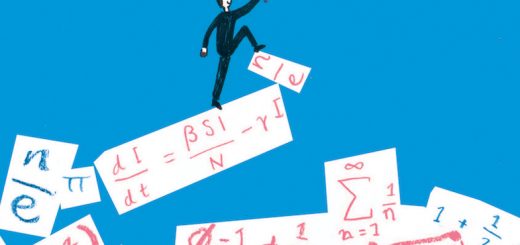Zhang! And the Gap Is Gone

The royal baby, the Ashes, the NSA, Syria, twerking and selfies all caused much conversation this summer, but there was one topic above all else that had the nation talking: “Has Yitang Zhang solved the Twin Prime Conjecture?”. For weeks there were rumours, talks of a possible solution, a paper was being reviewed by the Annals of Mathematics 1; Zhang had come up with something, but what was it? We now have this answer and it’s big, 70 million big.
Let’s rewind for a moment. What is the Twin Prime Conjecture and what has 70 million got to do with it? A lot of modern mathematics can be inaccessible to the non-expert due to the vast, but necessary, amount of unfamiliar terminology used. However, Zhang’s discovery just concerns a curious property about whole numbers, in particular prime numbers*, which has mystified mathematicians for a long time. The Twin Prime Conjecture goes back as far as Euclid (c. 300 BCE) who is known, amongst many other things, for the earliest proof that there exist infinitely many prime numbers. Euclid thought that there were an infinite number of primes that were only two apart, e.g., 3 and 5, 11 and 13, and 1997 and 1999. These numbers are known as twin primes, hence the name of the conjecture. Yitang Zhang has managed to prove a weaker** form of the Twin Prime Conjecture, that there are an infinite number of prime numbers no more than some fixed number, between 2 and 70 million, apart. “What!?!? 70 million!?!?” I hear you cry. “You’re aiming for an answer of 2 and you’re at 70 million, this isn’t news.”
Normally, 70 million is considered a large number but in number theory it is tiny. It has been known for a long time that the density of prime numbers decreases as you move along the number line. For example there are 25 primes between 0 and 100 and only 16 primes between 1000 and 1100. This relationship is known as The Prime Number Theorem (PNT) and is stated more formally as the number of primes less than a given number n is approximately x/ln n . However, although PNT states that prime numbers become less dense, this is only on average – there is no reason why a twin prime should not occur that is millions of digits long. Before Zhang’s proof it was not known whether there was any gap between prime numbers that occurred infinitely often. Now we know that there are infinitely many prime numbers that are no more that 70 million apart, which is incredible. Zhang has managed to narrow down an answer from infinity to 70 million.
Whilst working on the Twin Prime Conjecture, Zhang concentrated his efforts on trying to show that there is a bounded gap between prime numbers and so was not interested in how large the number is, just that it exists and is finite. Since Zhang has published his work, an online collaboration called Polymath8 2 has started refining his techniques in an attempt to decrease his upper bound. As of writing they have managed to narrow the gap from 70 million to 5,414.
How did he do it?
Zhang’s proof is a little too long to explain in detail in this article but it uses a vamped up version of the sieve technique. The sieve technique is over two thousand years old and is used to find prime numbers. The method is as follows: 2 is a prime number, but no multiple of 2 can be a prime number so cross off every number that is a multiple of 2, i.e., 4, 6, 8, 10, … etc. The next number remaining is 3, therefore 3 is a prime number. Now cross out every number that is a multiple of 3, i.e., 9, 15, 21, 27, etc. (6, 12, 18, 24, etc. have already been crossed off). Proceed in this fashion and the only remaining numbers will be prime. Several versions of the sieve method have been developed over the years and Zhang uses his own particular variant in his proof. Zhang’s sieve removes only those numbers that have no large prime factors and so can keep non-prime numbers. However, it is this difference that allowed Zhang to make progress on the Twin Prime Conjecture where others had failed.
Part of what is so remarkable about Zhang’s discovery is that he is relatively unknown. He is not a big name in the world of mathematics with a long history of important contributions and he is old (!), at least for a mathematician. Mathematics is often considered a young person’s game, with many mathematicians making their most significant contributions in their 20s or 30s. To every rule there are, of course, exceptions and Yitang Zhang, at 58, is one of them. As a young mathematician Zhang’s talents were often overlooked. After completing his PhD in 1991, he spent 8 years trying to find a position in academia. He worked as an accountant, a delivery worker for a restaurant, and in a sandwich shop, but eventually got a lecturer position at the University of New Hampshire and has been there ever since.
Like twin primes all good things come in pairs. As a remarkable coincidence, at the same time as Zhang presenting his proof of a weaker form of the Twin Prime Conjecture at Harvard University, Harold Helfgott posted a paper online 3 solving a weak form of the Goldbach Conjecture, another conjecture about prime numbers. The Goldbach Conjecture states that any even number is the sum of two prime numbers, e.g., 8 = 3 + 5 or 24 = 17 + 7. What Helfgott showed was that every odd number greater than 5 is the sum of three primes, e.g., 13 = 5 + 5 + 3 or 27 = 3 + 11 + 13, another curious conjecture that we now know to be true.
Perhaps after learning these little interesting facts about prime numbers, one might wonder “why does any of this matter?” In short, it doesn’t. One could argue that the basic building blocks of numbers are the prime numbers, since any number is uniquely determined by its prime divisors, and one could argue that prime numbers arise all over nature and so it’s important to understand them. One could also argue that computers worldwide are encrypted using a system that relies on our knowledge of prime numbers and so it has real world applications. But the real reason Zhang, Helfgott, Euler and many more mathematicians have spent time thinking about prime numbers is because it is interesting, and perhaps, to them, even more interesting than an onstage twerk.
* A prime number is a whole number that has only 1 and itself as divisors. For example 10 is not a prime number because it can be divided by 1, 2, 5 and 10 whereas 7 is prime since its divisors are 1 and 7 only. Alternatively one can think of prime numbers as “non-rectangular” numbers, where rectangles are required to have sides of length two or more. For example, 10 is a rectangular number because given 10 “things” one can rearrange them into a two by five rectangle (since 10= 2 x 5).
But 7 is prime since given 7 “things” they cannot be arranged into a rectangle, with sides of length two or more, without having any left over.
In this language the Twin Prime Conjecture and the Goldbach Conjecture just tell us properties about “unrectangleable” things.
** By “weaker” we mean that the statement of the theorem has been relaxed slightly. The original twin prime conjecture states that there are an infinite number of prime numbers that are no more than 2 apart. The weaker form says that there are an infinite number of prime numbers that are no more than some finite number apart. In Zhang’s case the finite number that is used is 70 million.
References
- Zhang, Yitang. “Bounded gaps between primes.” Ann. of Math., to appear.
- Check it out here.
- Helfgott, H. A. “Major arcs for Goldbach’s theorem.” arXiv preprint arXiv:1305.2897 (2013)












